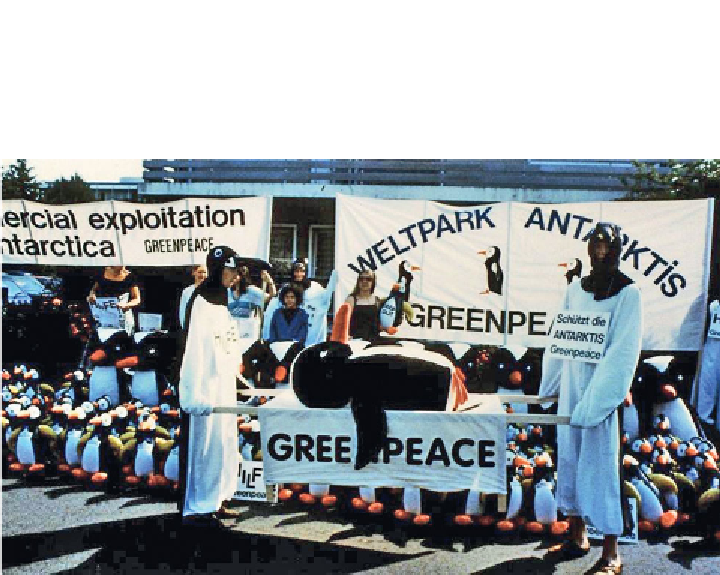Geoscience Reference
In-Depth Information
Figure 10.5
Greenpeace demonstrations at the 3rd meeting of IVth SATCM, Bonn, July 1983,
during the negotiations for the mineral regime. (Credit: Waltraud Demel, ASOC)
it was also important that the texts formalising their combined effects were not
too explicit. It would not be acceptable, for example, to give special identi
ed rights
to the seven claimants in a way that would be in contradiction of Article IV.
In this connection the most critical provisions were in the so-called regulatory
committees, where the claimants could more easily establish a blocking situation
than any other party.
The mineral discussions brought increased international attention onto
Antarctica, with new interested nations taking what could be termed two separate
lines of action. A number of countries decided they wanted to
,
and started research activities in the Antarctic. These included the large European
nations not already among the original 12, and most of the world's heavily
populated countries. They recognised that reaching the position of an ATCP prior to
the signature of the Convention meant in practice becoming permanent members
of the Convention. This mirrors the way the original 12 contracting parties have
permanent consultative status under the treaty.
A different approach was taken by a group of primarily developing nations
led by Malaysia. In 1983 they introduced the
'
join the club
'
to the agenda of
the United Nations General Assembly, claiming that Antarctica should be considered
the
'
Question of Antarctica
'
and therefore managed by the UN. The background
for this initiativemay have been a fear that arrangements would be reached that gave the
developed nations the lion's share of any mineral resources. Similar fears had been
'
common heritage of mankind
'



Search WWH ::

Custom Search